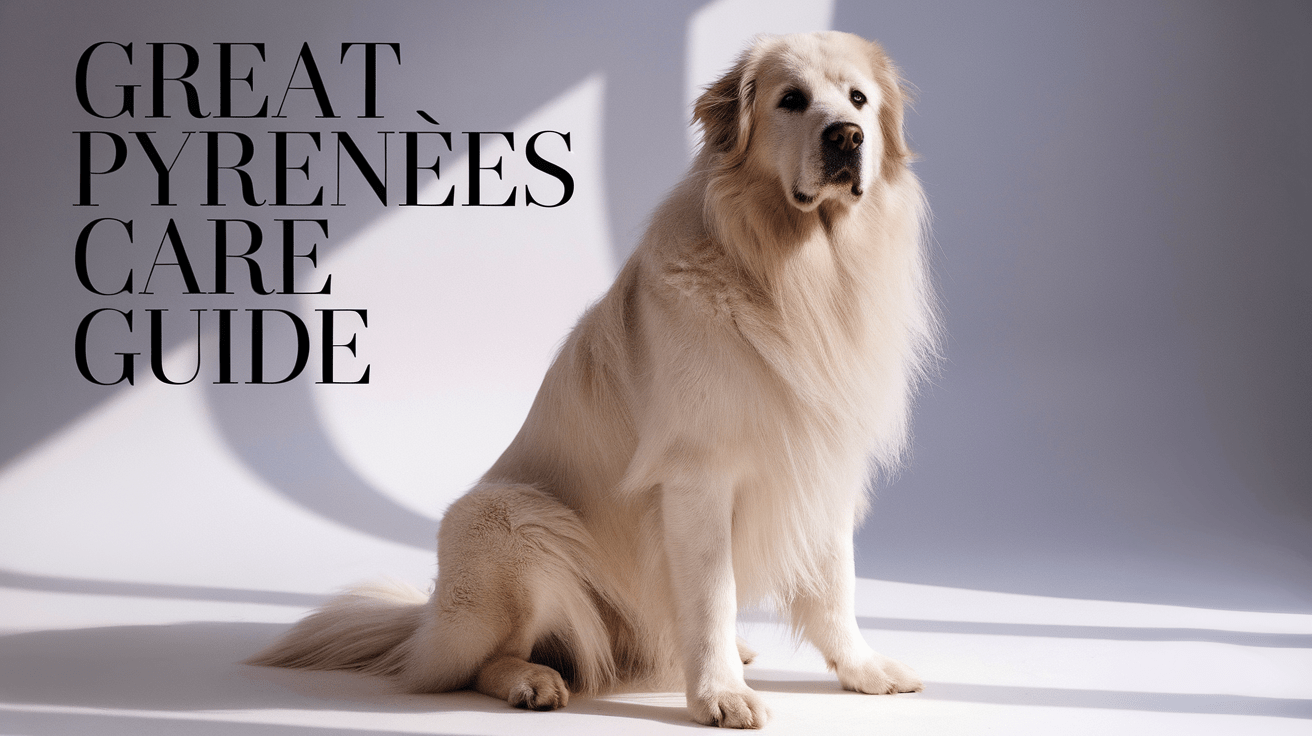Great Pyrenees Key Takeaways
- ✓ Heritage: Ancient breed originating from the Pyrenees Mountains, historically bred as sheep guardians with protective instincts still present today.
- ✓ Temperament: Known as gentle giants with calm demeanors, naturally protective without aggression, and independent thinkers.
- ✓ Care Requirements: Moderate exercise needs, regular grooming especially during shedding seasons, and specific dietary considerations for joint health.
- ✓ Training: Requires early socialization, positive reinforcement methods, and understanding of their independent nature and guardian instincts.
The Great Pyrenees is not just a dog; it’s a majestic guardian with a heart of gold and the presence of a polar bear! As a veterinarian who has treated countless “Pyrs” over my 15-year career, I can tell you these gentle giants are truly special. According to the American Kennel Club, these remarkable dogs were originally bred to guard sheep in the Pyrenees Mountains, and they still maintain that noble, protective nature today.
Having worked with numerous Great Pyrenees families in my Vermont practice, I’ve seen firsthand how these magnificent dogs can transform from fierce guardians to gentle family companions in an instant. While their impressive size (often weighing up to 100 pounds!) might seem intimidating, they’re actually known as “gentle giants” in the dog world. Whether you’re considering adding a Great Pyrenees to your family or simply want to learn more about this fascinating breed, this comprehensive guide will walk you through everything you need to know about these stunning mountain dogs.
Understanding the Great Pyrenees Breed
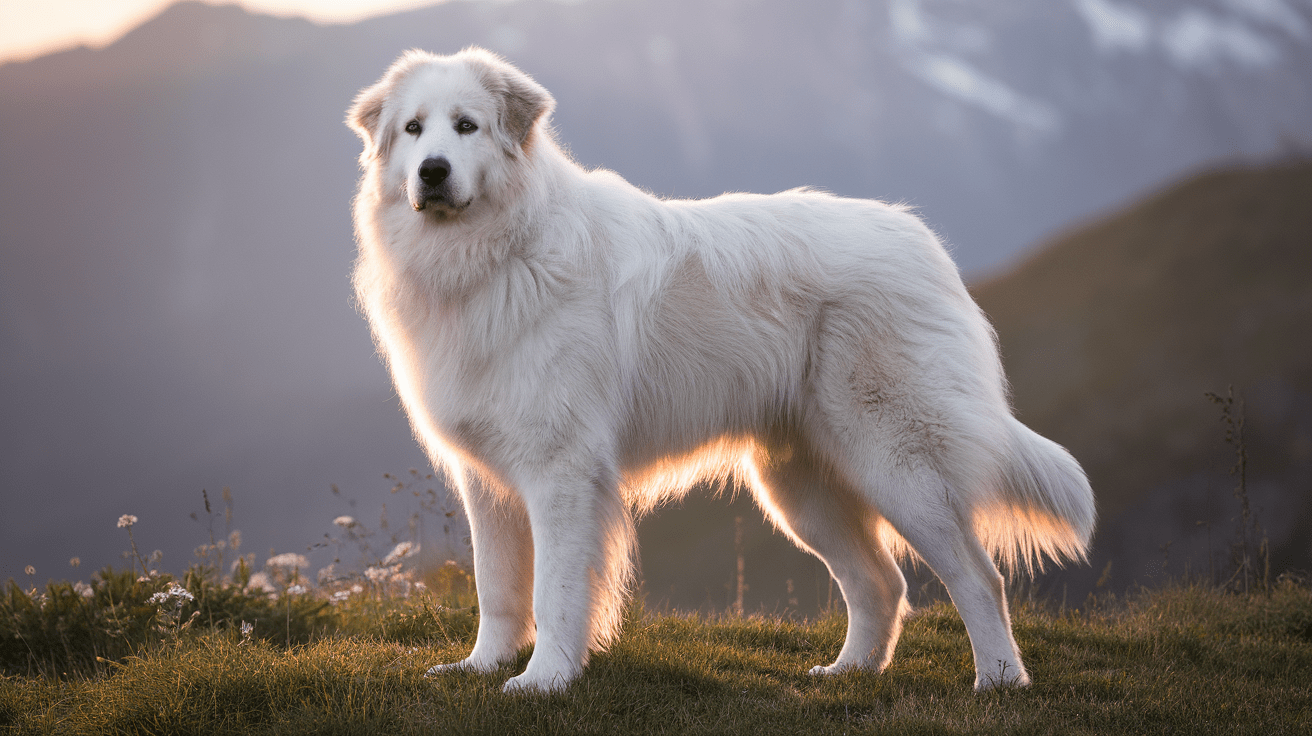
Historical Background and Origin
As a veterinarian who’s had the privilege of working with many Great Pyrenees, I’m always fascinated by their rich history. These magnificent dogs originated in the Pyrenees Mountains between France and Spain, where they worked alongside shepherds for thousands of years. According to the Great Pyrenees Club of America, fossils of similar dogs date back to 1800-1000 BCE, making them one of the oldest dog breeds still existing today.
Just last month, I treated a Pyr named Luna who perfectly demonstrated her ancestors’ guardian instincts when she positioned herself between me and her family’s young children during their first visit – not aggressively, but protectively. This inherent behavior is deeply rooted in their DNA from centuries of protecting sheep from wolves and bears.
Physical Characteristics and Size
Great Pyrenees are truly impressive in size. Adult males typically stand 27-32 inches tall and weigh 100-160 pounds, while females are slightly smaller. Their most distinctive features include:
• A thick, weather-resistant white coat (sometimes with gray, tan, or reddish-brown markings)
• A wedge-shaped head with dark, almond-shaped eyes
• Double dewclaws on their hind legs – a unique characteristic that helped them navigate snowy mountain terrain
Breed Temperament and Personality
Think of a Great Pyrenees as a gentle snow cloud with the heart of a lion. Their temperament is what makes them truly special. In my experience, they display:
• Patient guardianship – They’re naturally protective without being aggressive
• Calm demeanor – Despite their size, they’re typically very gentle
• Independent thinking – Sometimes mistaken for stubbornness, it’s actually a trait that helped them make autonomous decisions while guarding flocks
I often tell my clients that Great Pyrenees operate on “Pyr Time” – they’re known for their thoughtful, measured responses rather than quick reactions. This characteristic stems from their heritage as independent guardians who needed to assess situations carefully before acting.
Great Pyrenees Care Requirements
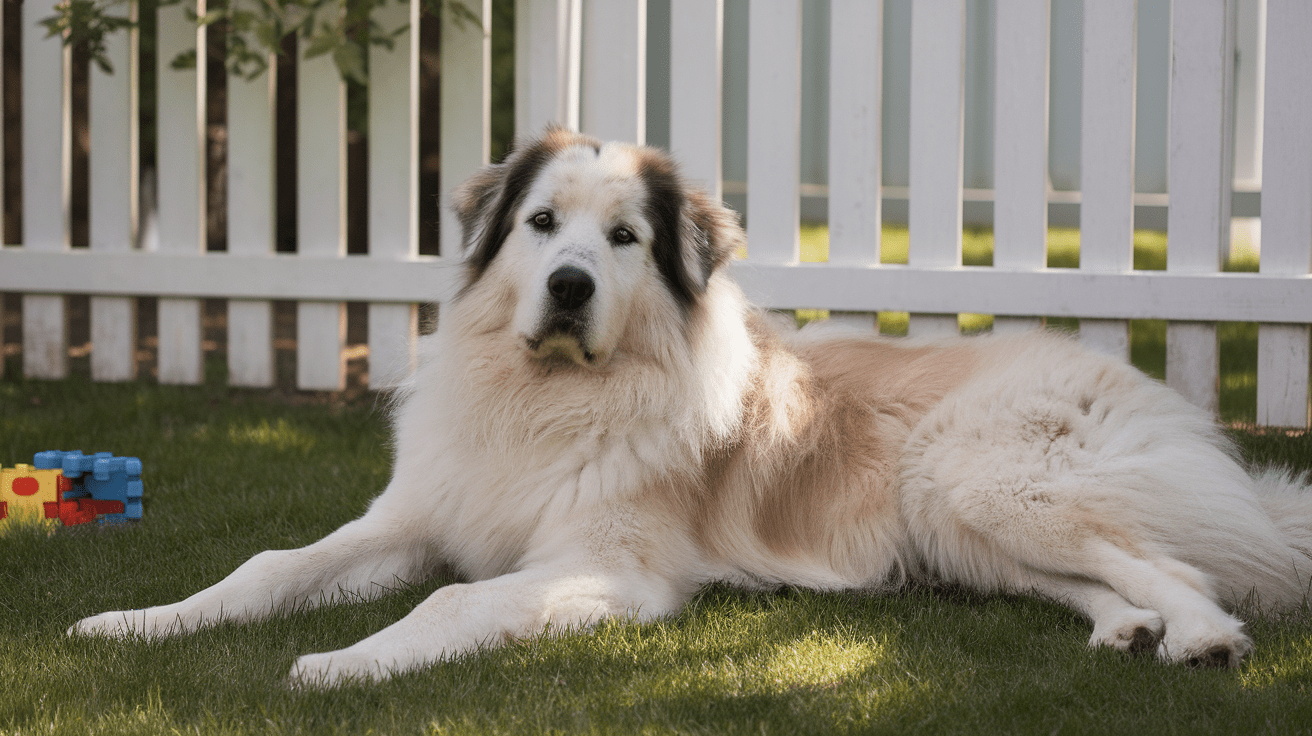
Exercise and Activity Needs
Despite their large size, Great Pyrenees don’t require intense exercise. From my clinical experience, these dogs thrive with about 30-45 minutes of moderate activity daily. One of my clients once joked that her Pyr was a “professional lounger with occasional bursts of energy” – and that’s quite accurate! However, they do need regular mental stimulation to prevent boredom.
I recommend:
• Daily walks at a relaxed pace
• Access to a securely fenced yard (they can be escape artists!)
• Mental enrichment activities like puzzle toys
• Gentle play sessions, especially in cooler weather
Grooming and Maintenance
According to the National Great Pyrenees Rescue, these dogs shed their thick double coat twice yearly, with the spring shed being particularly intense. I always tell my clients to think of it as “snow in summer!” Regular grooming is essential:
• Brush 2-3 times weekly (daily during shedding season)
• Monthly baths are usually sufficient
• Regular nail trimming and ear cleaning
• Special attention to the feathering on legs and tail
Diet and Nutrition Guidelines
As a large breed dog, proper nutrition is crucial for Great Pyrenees. I’ve seen how the right diet can make a significant difference in their joint health and overall well-being. Last year, I worked with a Pyr named Max who transformed from a lethargic, overweight dog to an energetic companion simply through proper diet management.
Key nutritional considerations include:
• High-quality protein for muscle maintenance
• Controlled portions to prevent obesity
• Joint-supporting nutrients like glucosamine and chondroitin
• Fresh water available at all times (they drink a lot!)
Remember to feed them twice daily rather than one large meal, and always consider their age, activity level, and health status when determining portion sizes. These gentle giants don’t need as much food as their size might suggest – they’re actually quite efficient with their energy use!
Training and Socialization
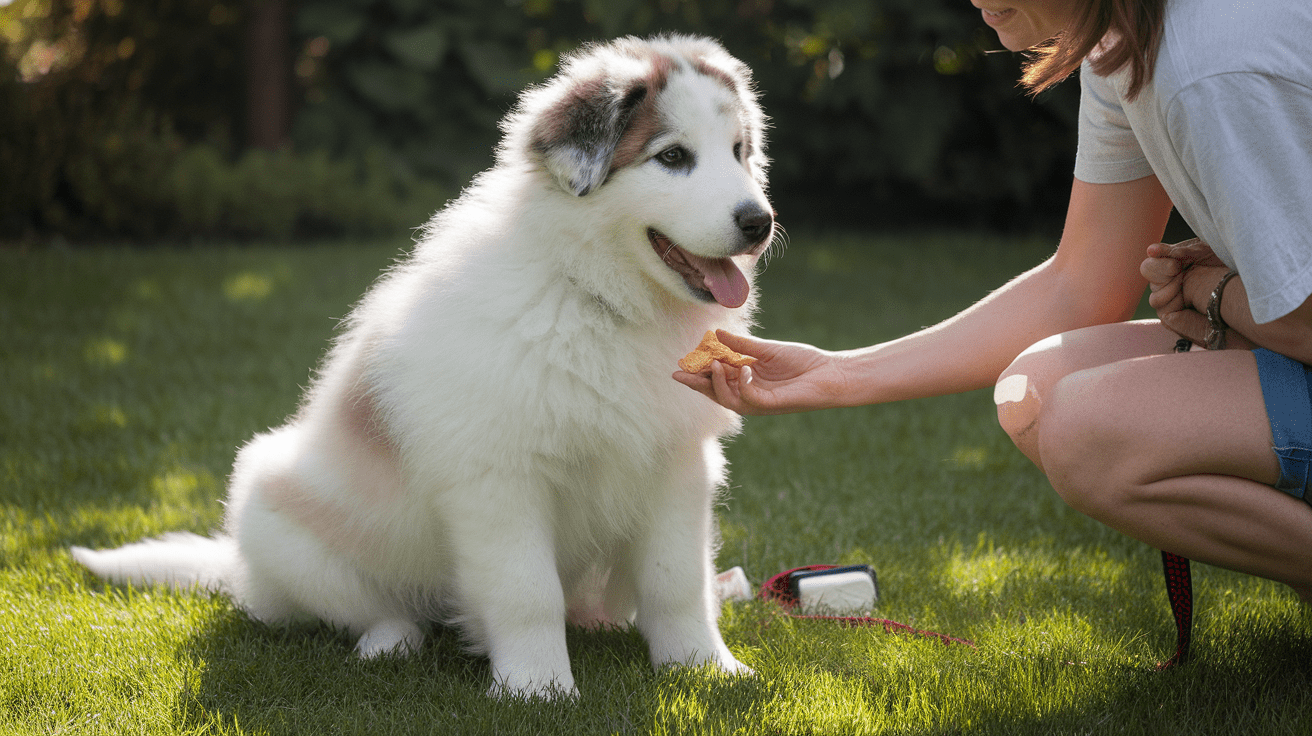
Early Puppy Training Tips
Training a Great Pyrenees requires understanding their unique guardian mindset. According to the Great Pyrenees Association of America, about 65% of Pyr owners report that consistent early training significantly reduces common behavioral challenges. As someone who’s helped countless families with their Pyr puppies, I always emphasize that these dogs respond best to gentle, positive reinforcement methods.
Essential early training should focus on:
• Basic obedience commands using positive reinforcement
• Leash training (start early – they’ll be powerful adults!)
• Crate training for safety and comfort
• Boundary training – crucial for these natural wanderers
Common Behavioral Challenges
In my practice, I recently worked with a Great Pyrenees named Bear who perfectly illustrated the breed’s typical behavioral patterns. While incredibly gentle with his family’s children, he would patrol their property boundaries religiously and bark at perceived threats. This is exactly what these dogs were bred to do!
Common challenges include:
• Nocturnal barking – they’re naturally more alert at night
• Independent decision-making (sometimes perceived as stubbornness)
• Roaming tendencies – they instinctively want to patrol their territory
• Strong guardian instincts that need proper channeling
Socialization with People and Other Animals
Proper socialization is absolutely crucial for Great Pyrenees. I always tell my clients to think of socialization like building a library of positive experiences for their puppy. The more diverse and positive encounters they have early on, the more well-adjusted they’ll be as adults.
Focus on exposing your Pyr to:
• Different types of people (varying ages, appearances, and behaviors)
• Various environments and situations
• Other animals (both dogs and non-canine pets)
• Common household sounds and experiences
Remember that Great Pyrenees are naturally cautious and protective. Their first instinct might be to assess situations before engaging. Don’t rush them – let them set the pace for new interactions. One of my clients described her Pyr’s socialization style as “watching first, making friends later,” which perfectly captures their thoughtful approach to new situations.
Health and Lifespan

Common Health Issues
As a veterinarian who’s treated numerous Great Pyrenees over the years, I’ve observed several breed-specific health concerns. According to the Orthopedic Foundation for Animals, approximately 12% of Great Pyrenees are affected by hip dysplasia. Just last month, I treated a gentle giant named Thor who reminded me why proactive health monitoring is so crucial for these magnificent dogs.
Common health issues in Great Pyrenees include:
• Hip and elbow dysplasia – common in large breeds
• Bloat (Gastric Dilatation-Volvulus) – a potentially life-threatening emergency
• Bone cancer (osteosarcoma)
• Eye problems, particularly entropion and ectropion
Preventive Care and Vaccinations
Prevention is always better than cure, and this is especially true for Great Pyrenees. I like to tell my clients that caring for a Pyr’s health is like maintaining a luxury car – regular maintenance prevents costly repairs later. A comprehensive preventive care program should include:
• Regular veterinary check-ups (twice yearly for adults)
• Core vaccinations and boosters
• Monthly heartworm prevention
• Regular dental care and cleaning
• Weight management to protect joints
Average Life Expectancy and Aging Care
Great Pyrenees typically live 10-12 years, though I’ve had the pleasure of treating several who lived beyond 13. As these gentle giants age, they require special attention to maintain their quality of life. I recently worked with a 12-year-old Pyr named Sophie who stayed active and happy well into her senior years thanks to her family’s dedicated care.
Key considerations for aging Pyrs include:
• Joint supplement administration
• Modified exercise routines to accommodate reduced mobility
• Regular pain assessment and management
• Adjusting diet to meet changing nutritional needs
• More frequent health check-ups
Remember, every Great Pyrenees ages differently. What works for one may not work for another. The key is to work closely with your veterinarian to develop a personalized care plan that addresses your dog’s specific needs as they age. With proper care and attention, these magnificent dogs can enjoy their golden years with dignity and comfort.
Is a Great Pyrenees Right for You?
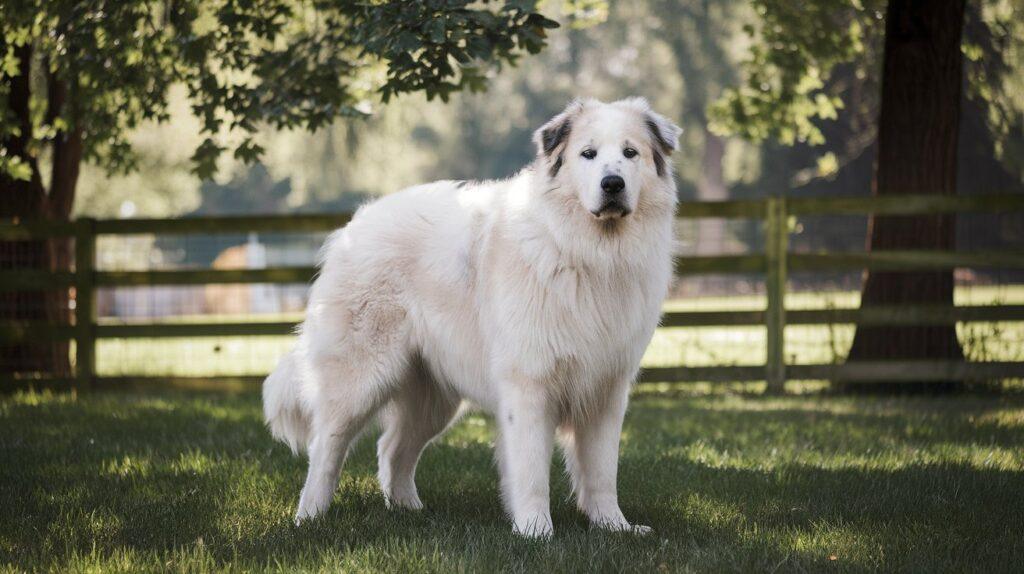
Living Space Requirements
As someone who’s advised countless families about Great Pyrenees adoption, I can tell you that living space is crucial. According to the Great Pyrenees Rescue Society, approximately 42% of Pyr surrenders are due to inadequate living space. These majestic dogs need room to fulfill their guardian instincts.
Ideal living situations include:
• A large, securely fenced yard (minimum 6-foot fence)
• Adequate indoor space to accommodate their size
• Access to shaded outdoor areas
• A cool environment (they don’t tolerate heat well)
Time and Financial Commitment
I often tell my clients that owning a Great Pyrenees is like having a part-time job – rewarding but demanding! Last week, I met with a family who perfectly budgeted for their Pyr’s needs, including regular grooming sessions, quality food, and preventive healthcare. Their preparation reminded me why financial planning is so crucial for potential Pyr owners.
Consider these ongoing expenses:
• Quality food (approximately $60-100 monthly)
• Regular grooming ($75-100 per session)
• Veterinary care and preventive medications
• Training and socialization classes
Family Compatibility and Lifestyle Considerations
Great Pyrenees can be wonderful family dogs, but they’re not for everyone. I remember working with a young couple who thought they wanted a Pyr until we discussed the breed’s nocturnal barking habits – their apartment lifestyle wasn’t compatible with these natural guardians!
A Great Pyrenees might be right for you if:
• You have patience for training an independent thinker
• Your lifestyle allows for consistent daily exercise
• You don’t mind some fur on your furniture (lots of it!)
• You appreciate a calm, gentle guardian rather than a playful, high-energy dog
Before making your decision, consider spending time with Pyr owners or volunteering at a breed-specific rescue. These experiences can provide valuable insights into daily life with these magnificent dogs. Remember, a Great Pyrenees is a long-term commitment that requires dedication, understanding, and the right environment to thrive.
Frequently Asked Questions About Great Pyrenees
Conclusion
Living with a Great Pyrenees is a unique and rewarding experience that requires careful consideration. These majestic guardians offer unwavering loyalty, gentle companionship, and protective instincts that make them exceptional family dogs for the right households. As a veterinarian, I’ve witnessed countless success stories where Pyrs have enriched their families’ lives immeasurably. However, their specific needs – from spacious living arrangements to dedicated grooming routines – shouldn’t be underestimated. If you’re prepared for the commitment of time, space, and resources, and you appreciate a dog that combines independent thinking with devoted guardianship, a Great Pyrenees might be your perfect match. Remember, these gentle giants aren’t just pets; they’re historical guardians bringing centuries of noble heritage into your home.

